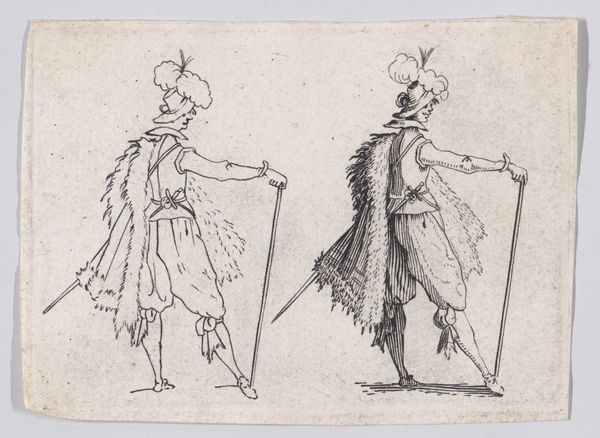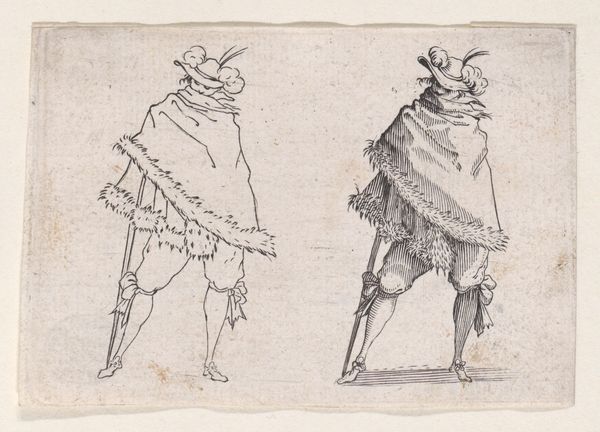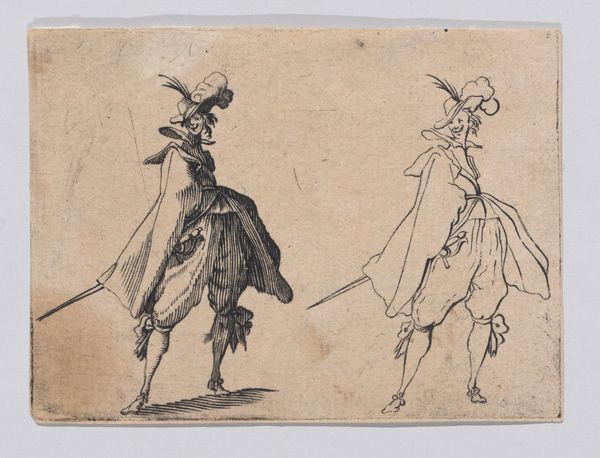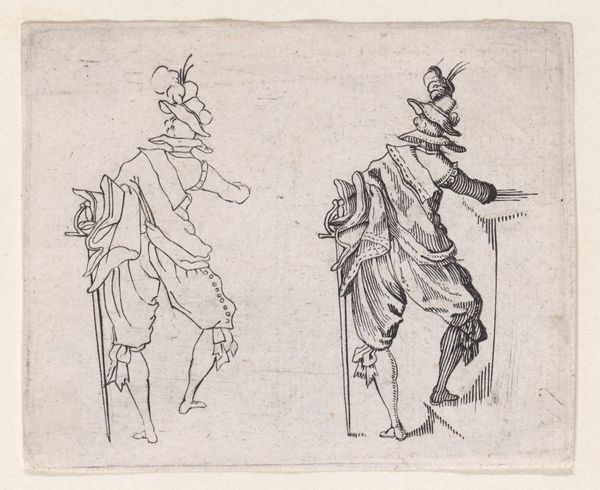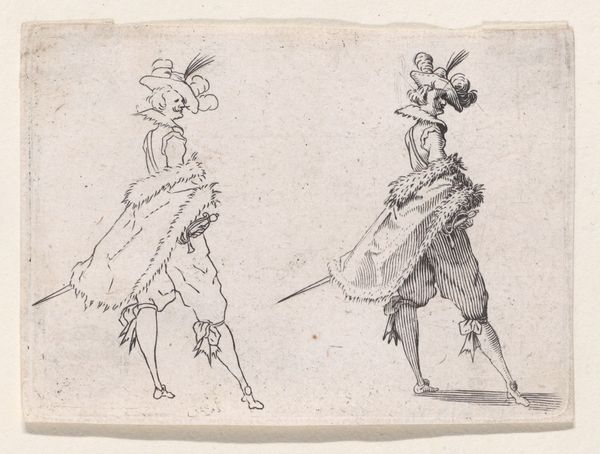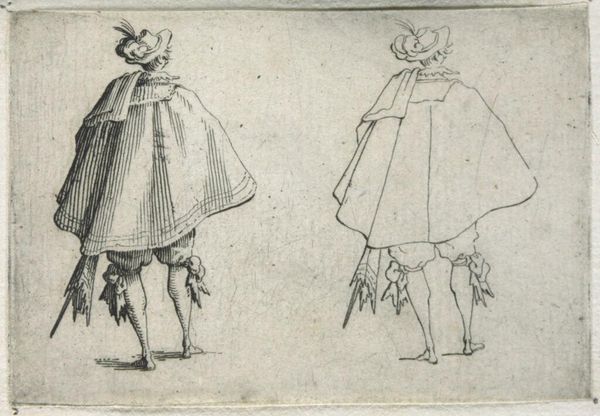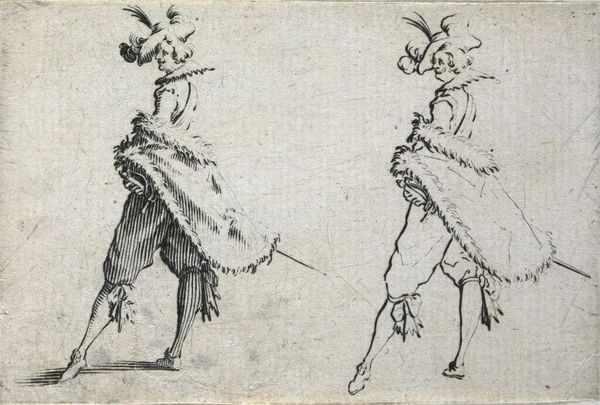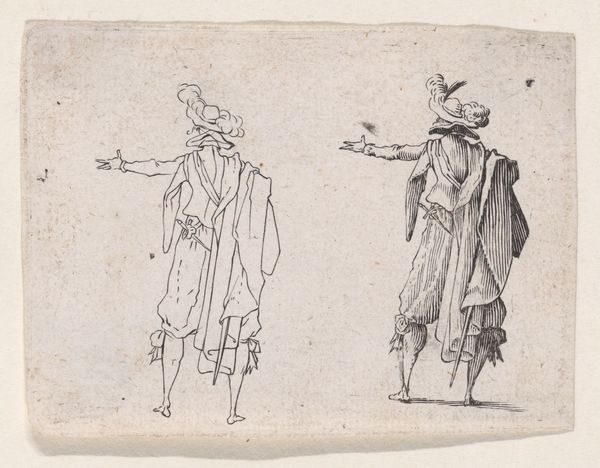
Copy of Le Gentilhomme au Grand Manteau, Vu de Face (Gentleman with a Large Mantle, Viewed from the Front), from "Les Caprices" Series A, The Florence Set 1620 - 1700
0:00
0:00
drawing, print, etching
#
portrait
#
drawing
#
baroque
# print
#
etching
#
figuration
Dimensions: Sheet: 2 5/16 x 3 5/16 in. (5.9 x 8.4 cm)
Copyright: Public Domain
Editor: Here we have "Copy of Le Gentilhomme au Grand Manteau," a baroque etching dating sometime between 1620 and 1700, held here at the Met. The gentleman looks theatrical, but there's also a flatness to the image due to the printmaking. I wonder, what stories does this etching tell us about its time? Curator: It's fascinating how you pick up on that theatricality. Etchings like this, especially within series like "Les Caprices," weren’t just portraits; they were powerful tools for disseminating imagery and ideals. Consider the gentleman's elaborate attire. What does it tell us about social status and the intended audience for such prints? Editor: I see your point. It’s obviously meant for those who can appreciate—and afford— such fine clothing. Is it a way of displaying the socio-economic structures? Curator: Exactly. Prints allowed for a wider distribution of images previously limited to the wealthy. By understanding who was buying and circulating these images, we get insights into shifting social dynamics, emerging middle classes and the aspiration to embody courtly ideals. Does that make you think of the modern context of image dissemination? Editor: It definitely does. Think of social media and how people try to present themselves in an ideal form. But I am curious, why are there two of him? What did the original artwork this copy come from suggest? Curator: That doubling effect in this particular image enhances the performative aspect, perhaps poking fun at the affectations of nobility or simply showcasing variations in dress and style. Analyzing the "Caprices" series, one would be able to unravel specific socio-political commentary from the artist. These are pieces circulated among the elite as much as they were used as currency amongst merchants, scholars, and artists to disseminate these images in broader contexts, and to make them accessible to broader audiences than simply elite classes. Editor: That is insightful. Seeing the cultural relevance of the print medium and the social commentary that they provide reshapes how I see not just this piece, but portraiture of the era more broadly. Curator: Precisely! Now consider how museums, like the Met, play a role in shaping our understanding of these historical dialogues by preserving and presenting them.
Comments
No comments
Be the first to comment and join the conversation on the ultimate creative platform.

